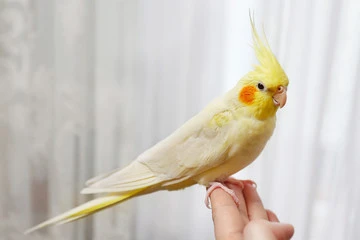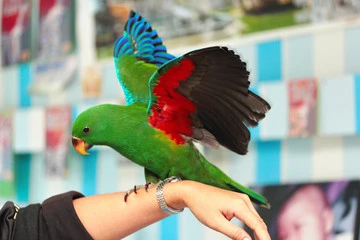Why Gloster Canary Bird Is the Best Happy Companion
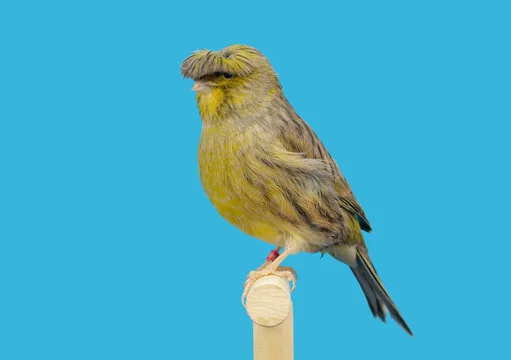
Do you dream of a cheerful little companion whose melodious song fills your home? Perhaps you’re captivated by the adorable, compact form of a bird that’s a little different from the standard canary. If so, the Gloster canary bird might be the perfect feathered friend for you. These charming birds are increasingly popular for their distinctive appearance, delightful personalities, and captivating songs. This comprehensive guide will walk you through everything you need to know about welcoming a Gloster canary into your life, from understanding their origins and types to providing optimal care and enjoying their beautiful singing.
Table of Contents
A Brief History of the Gloster Canary
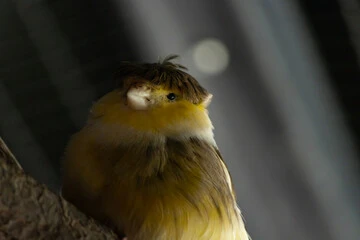
The Gloster canary, a descendant of the wild canary (Domestic canary), originated in England in the 1920s. Developed by Mabel Gloster, the breed was created through careful selective breeding to produce a small, rounded bird with a pleasing appearance and strong singing ability. The aim was a canary that was ‘cobby’ – meaning short and compact – quite different from the more streamlined canaries of the time. Today, Gloster canaries are prized by breeders and pet owners alike for their unique qualities.
Gloster Canary Types: Crested vs. Plainhead

One of the first things you’ll notice about Gloster canaries for sale is that they come in two main types:
- Crested Gloster: These birds sport a delightful crest of feathers on their head, giving them a particularly endearing look. The crest should be symmetrical and balanced.
- Plainhead Gloster: As the name suggests, these Glosters lack a crest. They are judged on the overall shape and quality of their head and body.
Both crested and plainhead Glosters are equally popular, and the choice often comes down to personal preference. Genetic factors determine whether a chick will be crested or plainhead, and breeders carefully manage these traits.
Understanding Gloster Canary Care
Providing excellent Gloster canary care is crucial for ensuring your bird thrives. Here’s a breakdown of the key aspects:
Housing
- Cage Size: A minimum cage size of 18″ x 12″ x 18″ is recommended, but larger is always better. Glosters are active birds and need room to move.
- Bar Spacing: ½ inch bar spacing is ideal to prevent escapes or injuries.
- Perches: Offer a variety of perches – natural wood, plastic, and rope – of different diameters to exercise your bird’s feet.
- Location: Place the cage in a bright, draft-free room, away from direct sunlight and kitchen fumes. Avoid locations with significant temperature fluctuations.
- Cleanliness: Daily cleaning of food and water dishes, and a thorough cage cleaning at least once a week, are essential.
Diet
A balanced Gloster canary diet is vital for health and vitality.
- Seed Mix: A high-quality canary seed mix should form the base of the diet.
- Fresh Foods: Supplement with fresh greens like spinach, kale, and romaine lettuce. Offer small amounts of fruits like apples and berries as treats.
- Egg Food & Grit: Offer egg food, especially during breeding season, for added protein. Provide a cuttlebone or grit to aid digestion.
- Water: Always provide fresh, clean water.
Health
Like all pets, Gloster canaries are susceptible to certain health issues. Being aware of these can help you provide preventative Gloster canary health care:
- Scaly Face/Legs: Caused by mites, this condition causes crusty scales on the beak, legs, and feet. Treatment involves applying a mite treatment recommended by an avian veterinarian.
- Air Sac Mites: These mites can cause respiratory problems. Symptoms include labored breathing and a swollen appearance. Veterinary attention is crucial.
- Feather Issues: Plucking or dishevelled feathers can indicate stress, illness, or nutritional deficiencies.
- Regular Vet Checks: Annual check-ups with an avian veterinarian are highly recommended.
The Joy of Gloster Canary Singing
Gloster canary singing is a major draw for many enthusiasts. These birds are renowned for their complex and melodious warbles, often described as bubbling or rippling.
- Singing Season: Gloster canaries typically sing more frequently during the spring and summer months, driven by increased daylight hours and hormonal changes.
- Male vs. Female: Generally, males are the more prolific singers, but females can also produce soft, sweet songs.
- Encouraging Singing: Providing a stimulating environment, good nutrition, and exposure to natural light can encourage singing. Talking or playing gentle music near the cage can also inspire them.
- Song Variety: Glosters have a diverse repertoire of songs and trills, making each bird’s vocalizations unique.
Gloster Canary Breeding: A Rewarding Challenge
Gloster canary breeding can be a deeply rewarding experience, but requires careful planning and a thorough understanding of the process.
- Age: Birds should be at least one year old before breeding.
- Pairing: Choose healthy, well-matched pairs. Observe their behavior to ensure compatibility.
- Nesting Material: Provide a wicker or coconut fiber nest, along with soft nesting material like hemp fibers or shredded paper.
- Breeding Season: Breeding typically occurs in the spring.
- Incubation: The female will lay 3-5 eggs, which she incubates for approximately 14 days.
- Hand-Feeding: Chicks are initially fed by the mother, but may require hand-feeding if the parents are inexperienced or unable to provide adequate care.
- Legal Considerations: Always check local regulations regarding bird breeding.
Gloster Canary Lifespan: How Long Do They Live?
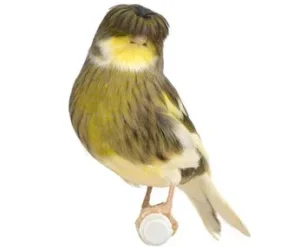
The average Gloster canary lifespan is 8-12 years, but with excellent care, some can live even longer. Providing a healthy diet, stimulating environment, and regular veterinary care are key to maximizing their lifespan. Genetic factors also play a role.
The Financial Aspect: Gloster Canary Price and Where to Buy
The Gloster canary price can vary depending on several factors:
- Age: Younger birds typically cost more.
- Type: Crested Glosters often command a slightly higher price than plainheads.
- Color/Markings: Rare or unique colorations can increase the price.
- Breeder Reputation: Reputable breeders who prioritize health and quality may charge more.
Generally, you can expect to pay between $75 and $200 for a healthy Gloster canary.
If you’re looking for Gloster canaries for sale, consider these options:
- Reputable Breeders: This is often the best option for ensuring a healthy, well-socialized bird.
- Bird Specialty Stores: Some pet stores specialize in birds and may carry Glosters.
- Online Classifieds: Exercise caution when purchasing from online sources, and always meet the seller in person before committing.
Before bringing a Gloster canary home, research breeders or sellers thoroughly, asking about their breeding practices and the bird’s health history.
Gloster Canary Bird: Are They Right for You?
| Feature | Description |
|---|---|
| Temperament | Lively, cheerful, inquisitive |
| Singing Ability | Excellent, melodic & complex |
| Size | Small, compact (4-5 inches) |
| Lifespan | 8-12 years |
| Care Level | Moderate |
| Space Required | Moderate cage size |
If you appreciate a beautiful bird with a captivating song and are willing to provide a caring and stimulating environment, a Gloster canary could be the perfect addition to your family. If you are new to bird keeping, consider researching best pet birds for beginners to see if a Gloster is a good fit for your experience level. Don’t forget to also explore our other articles on bird species to learn about other wonderful feathered companions!
Frequently Asked Questions (FAQ) About Gloster Canary Birds
Q: Are Gloster canaries good pets for beginners?
A: While not as hands-on as some other bird species, Gloster canaries can be good pets for beginners willing to learn about their specific needs. They’re relatively low-maintenance compared to larger parrots.
Q: Do Gloster canaries need a lot of attention?
A: Gloster canaries enjoy having their owners nearby and appreciate interaction, but they are not as demanding of attention as some other bird species. They don’t require constant handling.
Q: How can I tell the sex of a Gloster canary bird?
A: Sexing Glosters can be difficult. Experienced breeders can often determine sex based on subtle differences in their cloacal region, but this requires practice. DNA sexing is the most accurate method.
Q: What kind of toys do Gloster canaries enjoy?
A: Gloster canaries enjoy simple toys like swings, ladders, and shreddable toys. Rotate the toys regularly to keep them entertained.
Q: What is the difference between a Gloster and a Crested canary?
A: A Crested canary refers to any canary with a crest (a puff of feathers on the head.) The Gloster variety specifically refers to a small, cobby canary that can be crested or plainhead.
Conclusion
The Gloster canary bird is a truly captivating companion. With their charming appearance, delightful songs, and relatively easy care requirements, they offer a unique and rewarding pet-owning experience. By understanding their needs and providing a loving environment, you can enjoy years of joy and beautiful music from these remarkable little birds.
What are your thoughts on these delightful birds? Share your experiences or ask any questions you may have in the comments below! Don’t forget to share this article with anyone who might be considering adding a Gloster canary to their life.

